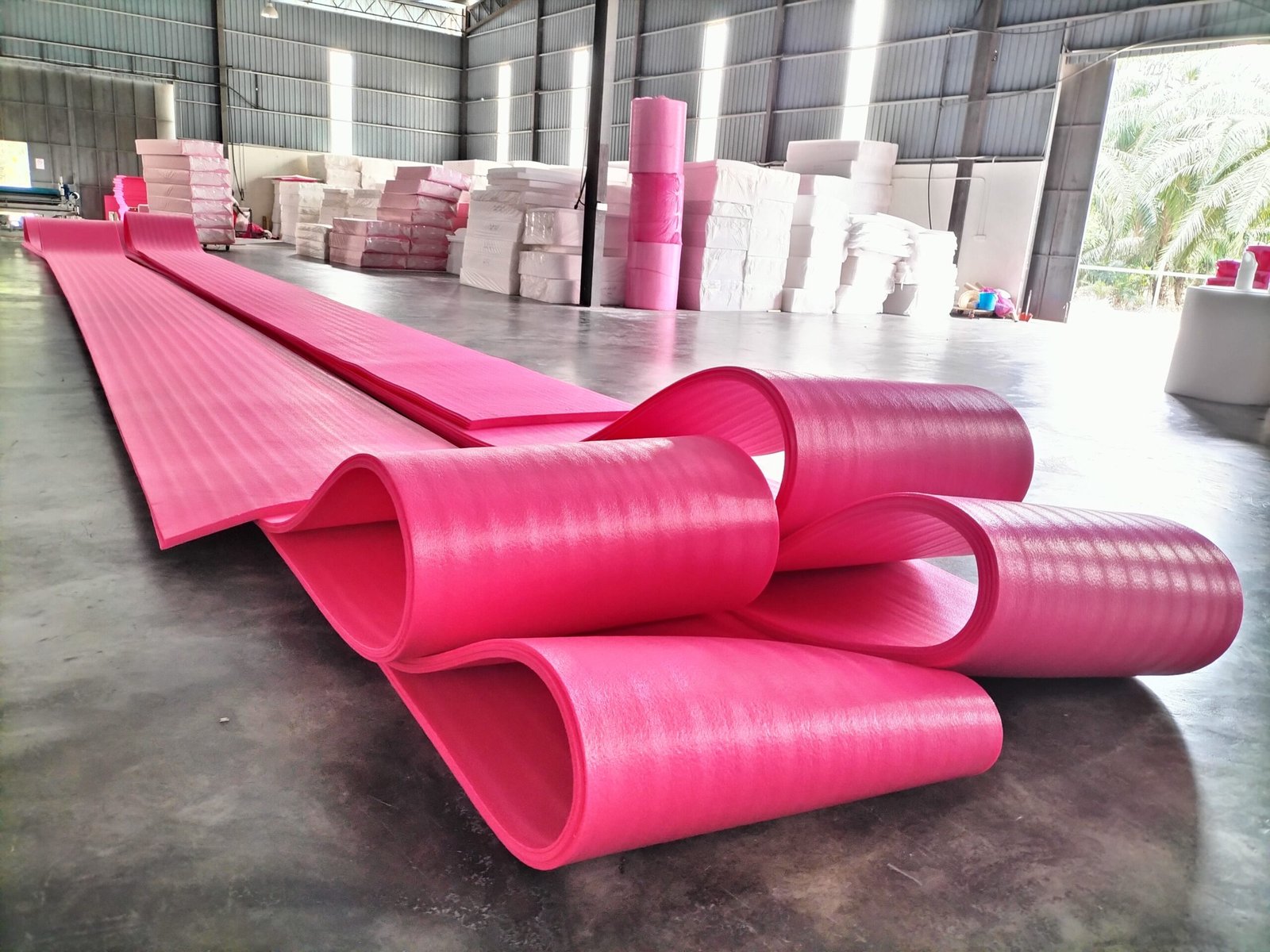Exploring the Benefits of EPE and PE Foam for Modern Packaging Solutions
Introduction
In today’s competitive marketplace, businesses need reliable, cost-effective, and sustainable packaging solutions. Packaging plays a crucial role in protecting goods during transportation, enhancing their presentation, and meeting customer expectations. Among the many materials available, EPE foam (Expanded Polyethylene Foam) and PE foam (Polyethylene Foam) stand out as versatile and innovative solutions for packaging. These materials are valued for their durability, lightweight structure, and ability to safeguard products from damage.
In this blog, we’ll explore what makes EPE and PE foam essential for packaging, their benefits, applications, and why they are the preferred choice for industries worldwide.

What is EPE Foam?
EPE foam, or Expanded Polyethylene Foam, is a flexible, lightweight, and cushioning material. It is made from polyethylene, a type of plastic, and is known for its excellent shock absorption and thermal insulation properties.
Key features of EPE foam include:
- Durability: Resistant to wear and tear, making it ideal for repeated use.
- Flexibility: Easily molded to fit different shapes and sizes of products.
- Water-Resistance: Protects items from moisture and humidity.
- Eco-Friendly Options: Recyclable and reusable, reducing environmental impact.
What is PE Foam?
PE foam, or Polyethylene Foam, is another popular packaging material that offers similar benefits to EPE foam. However, PE foam is typically denser and used for applications requiring higher durability and rigidity.
Distinct features of PE foam include:
- High-Impact Resistance: Ideal for heavy-duty packaging needs.
- Versatility: Suitable for a wide range of applications, from industrial to consumer products.
- Chemical Resistance: Resistant to oils, solvents, and other chemicals.
- Thermal Properties: Provides effective insulation for temperature-sensitive goods.
Benefits of EPE Foam and PE Foam in Packaging
-
Superior Protection
Both EPE foam and PE foam offer excellent cushioning, protecting fragile items from shocks, vibrations, and impacts during transportation. This ensures goods reach customers in perfect condition. -
Cost-Effective Solution
Lightweight yet durable, these foams reduce shipping costs without compromising protection. Their long lifespan also makes them an economical choice for businesses. -
Customizability
These materials can be easily cut, shaped, and laminated to meet specific packaging requirements. Whether it’s electronic devices or delicate glassware, EPE and PE foam provide tailored solutions. -
Environmentally Conscious
With growing concerns about sustainability, many businesses prefer recyclable and reusable packaging materials. EPE and PE foams are eco-friendly options that align with modern environmental goals. -
Aesthetic Appeal
In addition to functionality, these foams enhance the overall presentation of products. Their clean and professional look adds value to the unboxing experience.
Applications of EPE and PE Foam in Different Industries
-
Electronics Industry
EPE and PE foam are widely used to package electronic gadgets, such as smartphones, tablets, and cameras. Their anti-static properties protect sensitive components from damage caused by static electricity. -
Automotive Industry
These foams are utilized for protective padding, noise insulation, and packaging spare parts. Their impact resistance ensures safety during transit. -
Furniture and Home Appliances
Foam packaging prevents scratches and dents on furniture and appliances, ensuring they arrive in pristine condition. -
Food and Beverage Industry
PE foam is commonly used as insulation material for shipping temperature-sensitive items like frozen food and beverages. -
Healthcare and Pharmaceuticals
EPE foam packaging safeguards medical equipment and delicate instruments from contamination and damage.
Choosing the Right Foam for Your Packaging Needs
When selecting between EPE foam and PE foam, consider the following factors:
- Product Type: Fragile or temperature-sensitive items may require specific foam types.
- Budget: Both materials are affordable, but the choice depends on your packaging requirements.
- Environmental Impact: Look for recyclable options to align with sustainable practices.
- Volume of Usage: For bulk orders, EPE foam may offer more flexibility and cost savings.
Sustainability and the Future of Foam Packaging
The packaging industry is moving toward eco-friendly solutions, and EPE and PE foam are leading the way. Innovations like biodegradable foam and improved recycling processes make these materials even more appealing. Businesses adopting these solutions can not only protect their goods but also contribute to reducing their environmental footprint.
Conclusion
EPE foam and PE foam have revolutionized modern packaging with their versatility, cost-effectiveness, and eco-friendly properties. Whether you’re in the electronics, automotive, or food industry, these foams provide unparalleled protection and aesthetic appeal. By investing in the right foam material, you can enhance your packaging standards, reduce costs, and support sustainable practices.
If you’re looking for high-quality EPE foam or PE foam for your packaging needs, consider partnering with reliable suppliers like Mr Packaging, where innovative solutions meet customer satisfaction.
Comments
Post a Comment